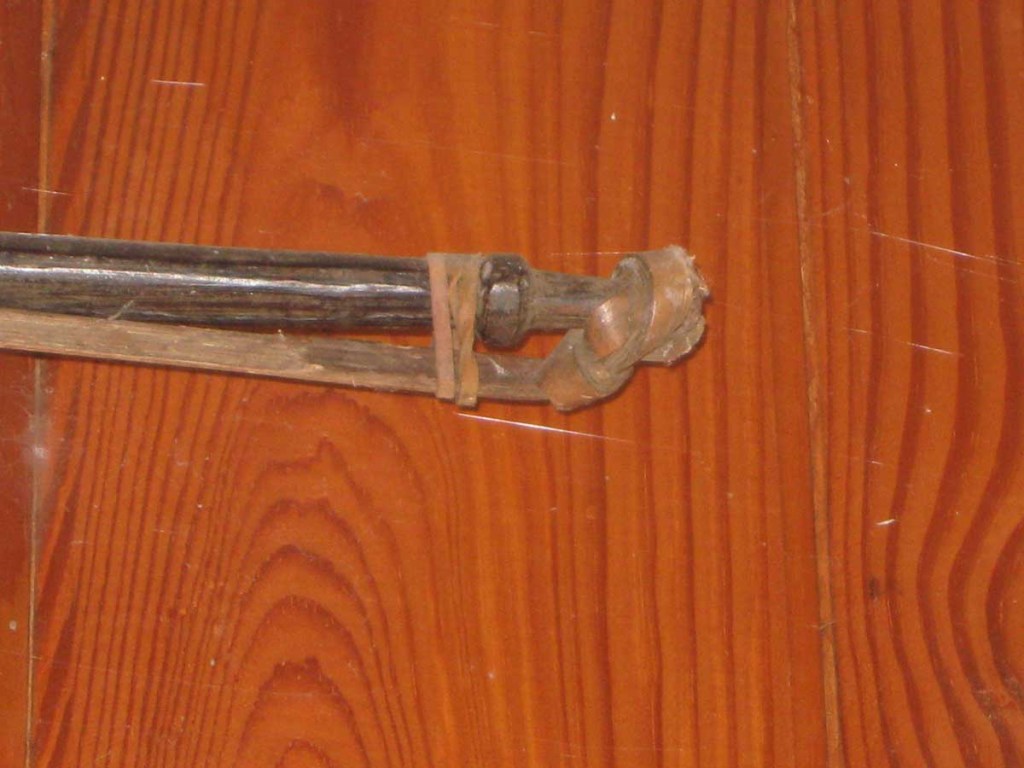Archery Hunting – An Ancient Sport
Published 5:00 am Friday, November 8, 2013

- The knot that secures the "bowstring" to the bow.
Deer hunting with bow and arrow has become so popular that a huge outdoor industry has developed to serve the wants and needs of archers who go after wild game. Major sporting goods outfitters issue large catalogs filled with archery gear. One Bass Pro Shops RedHead Archery catalog has 155 pages of everything from tree stands to bottles of scent-masking liquids.
Bowhunters abound in our part of the country as they do in virtually all deer habitat. Elk, bear and pronghorn have special archery seasons in states where they are hunted. And wild hogs, wild turkeys, and moose are other big game that attracts archers in the United States. Ambitious bowhunters take the largest African game and Alaskan brown bears with bow and arrow.
The bow and arrow was developed by prehistoric hunters some 8,000 years ago. Some primitive tribes still use this weapon to kill game animals for food. Today, natives in New Guinea hunt wild pigs with archery equipment that has evolved very little from the first weapons made by man. Their bows are straight sticks made of tough wood. The arrows are wooden as are their arrowheads.
My cousin Rita Taubman, and her husband Dick, lived in a remote part of New Guinea for years as missionaries. They brought me a hunting bow and eight arrows from the area. Most surprising are the bowstrings, which are made of strips of bamboo. The “string” is a thick sliver, some 3/8 inch wide, cut from the side of a bamboo cane.
These strips are surprisingly strong. They must be somewhat flexible when green for the strings are ingeniously tied directly to deep notches at the ends of the straight bow. Once they are cured, the knotted ends are so secure they cannot be untied without some kind of strong tool. The rear of the arrows are flat so they can be held against the flat “string.” They have no fletching.
The arrows I have are all bamboo sticks about the diameter of our modern hunting arrows. The arrowheads, better described as points, are eight to twelve inch long pieces of wood. The heavier points look like walnut but could be mahogany. Some are made of lighter wood. Some have notches cut so that they resemble a saw blade; a very effective means of assuring that the arrow stays in the wound to cause external bleeding, and thus easy trailing.
My guess is they shoot these small pigs at very close range from ambush points along trails and then enlist companions to help trail the wounded animal after the shot.
The bow and arrow is one of man’s most important inventions because it allowed hunters to kill game at a distance. Troops armed with bows helped establish the empire of ancient Egypt. Conquerors such as Attila the Hun and Genghis Khan depended on skilled bowmen. In one of the last major battles fought with bows, the deadly skill of English longbowmen defeated the French in the Battle of Agincourt in northern France in1415. The English archers, pikemen and a small cavalry numbered only about 13,000, but they routed some 50,000 Frenchmen.
Perhaps the greatest influence affecting the fascination that modern hunters have with the bow and arrow is the long history of its use by native Americans. Stories, both true and fictitious, of early encounters with Indians, both friendly and combatant, rarely portray the Indian without a bow and arrow. And we are reminded of the long history of bow and arrow use by ancient tribes when we find arrowheads that can be dated back many centuries. These treasured artifacts lie in the same woods and fields where we hunt today, and their presence stimulates stirring contemplation about our kinship with the early hunters.
Today’s bows have modern mechanical advantages, precision sights and shoot arrows with perfect shafts and cutting points that can zip completely through an elk. Early Americans made their bows from saplings in the woods and their arrowheads from stone shaped by a piece of deer antler. Fletching came from wild turkey feathers. Contemporary hunters use tackle manufactured to rigid perfection by those specializing in the individual components.
But we still bag animals essentially using a stick with a string that is pulled back and released to send an arrow arcing toward our quarry. Just like the Indians did it. Just like it has been done for thousands of years.





